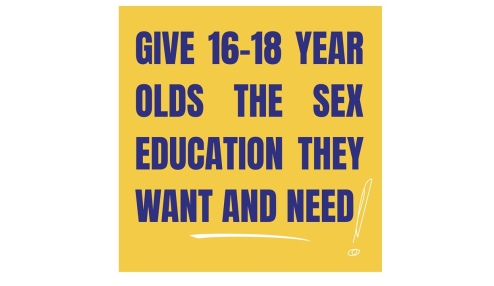As in any subject, the resources we use to teach RSE are fundamental – they are the vehicle through which we engage, communicate with and inspire our learners. Whether it be cloth anatomically correct dolls or a ‘puberty kit’ containing personal hygiene products, they allow learners to explore key concepts, enable us to include all learners by enhancing communication and can be used as assessment tools.
But how, as educators, do you know which resources to use? Sex Education Forum have put together a list of resources aimed at learners with SEND as a starting point, but before turning to the list, here are some key considerations for choosing and creating resources.
- Be clear about your objective; If you are clear about your learning objective, then sometimes creating your activity from scratch is quicker and more precise than searching for something online.
- Don’t reinvent the wheel! Re-use and tweak old resources that worked well.
- Carry out a resource amnesty and audit – As with other subjects often someone else in the school will already have taught it and found or produced resources. Collate and save all those favourite online resources in one place to create a resource bank that everyone can access. Then get together as a staff team to discuss – share how you use them and how they could be adapted for other groups. This is a time-saver and will build your skills too!
- Start by teaching key vocabulary – Is there key vocabulary that your learners need to understand before they can access this topic? Start by introducing this vocabulary and teaching what it means – provide pictures or real-life examples. Use communication boards or devices and have key vocabulary displayed for students to be able to see and access.
- Be practical – It doesn’t have to be a worksheet-based task – what are the practical skills needed? Are students demonstrating that they understood our teaching by now closing the toilet door or asking before hugging their friend?
- Is it inclusive? – Will all learners feel seen, be represented and recognise themselves in the resources? Our choice of symbols and pictures should represent people of different races, faiths, sexual orientation, genders and disabilities. If our students don’t feel represented then they don’t feel included or that what we’re teaching is for them.
- Relevant and relatable? Is the resource useful and can the learner relate it to their own life experiences? Are the tasks suggested actually helping them to practice skills they will use?
- Are the resources developmentally and age-appropriate? Our learners need to be taught concepts that are appropriate for their age, but at a level that is cognitively accessible for them – so primary aimed resources might use the appropriate level of language for our secondary learners – but is the content age-appropriate for the 14-year-olds we are teaching? Are the scenarios relevant to them? Are the illustrations using children or teens? Is the body science doll being used dressed like someone of their age group?
- Does the resource communicate values in line with your school policies? For example, if you have a policy relating to appropriate touch between staff and pupils do the stories or activities you use need to be adapted to reflect those? Is it factual and medically accurate? Does the resource use correct and up-to-date language?
- Communicate with parents about resources used in school – Sharing examples of resources you use with parents so they have an understanding of how a topic is being taught can help build confidence with parents not just in what is being taught, but also in potentially starting a conversation with their child about what they have learnt. If you’ve created a social story or visual prompt at school and it can be used at home then this will help reinforce learning. Or maybe the family already use a resource at home that has been effective and maybe beneficial for other learners.
- Covering resource choice on school RSE policy – Being clear in your policy about how you choose and adapt resources to meet the needs of the children you are teaching can be reassuring and increase parents’ confidence in how RSE is approached in your school.
- The most important resource is you! You as the educator are the best resource when you feel confident and knowledgeable about the topic you are teaching. If you feel you would like more support then we have a range of training that can help. Have a look at our calendar here.
Nicky Waring
RSE Trainer and Specialist
November 2023
Further support
You need to be a member of the Sex Education Forum to access our updated Relationships & Sex Education Resources List: Special Educational Needs and Disability.




Share